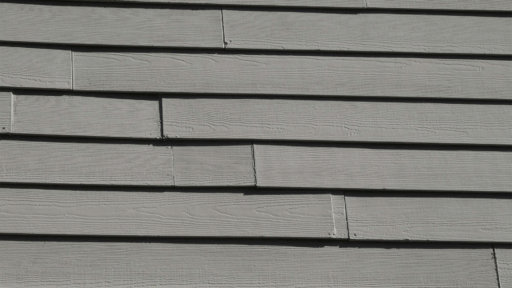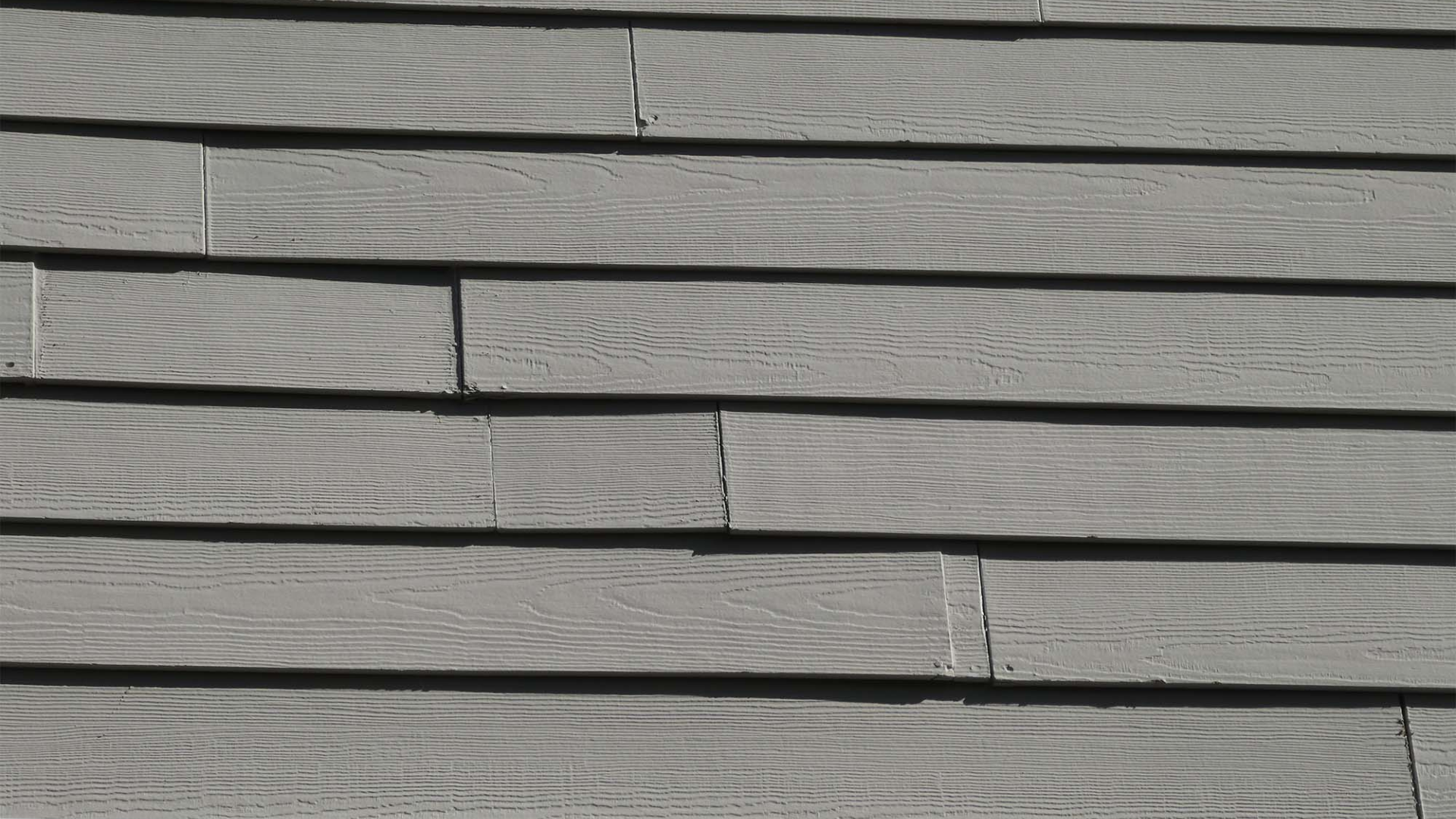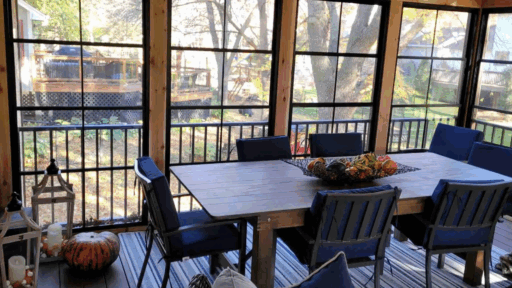Fiber cement siding is a strong and attractive option for many homes. It gives the appearance of wood but lasts longer and withstands fire, pests, and harsh weather conditions.
You probably chose it because it promised low maintenance and long life.
However, now you’re noticing cracks, peeling paint, or other issues. You’re starting to wonder if something went wrong.
Don’t panic. These issues are common and often easy to fix.
I’ve worked with siding for many years and have helped many people resolve similar problems.
In this article, I’ll explain the most common issues with fiber cement siding. I’ll show you what causes them and how to prevent them from getting worse.
You’ll also learn how to fix problems the right way. No confusing terms. No sales tricks. Just clear advice you can trust.
Let’s make sure your siding looks great and lasts as long as it should.
What Is Fiber Cement Siding?
Fiber cement siding is a strong, long-lasting material used to cover the outside of homes and buildings.
It’s made from a mix of cement, sand, and cellulose fibers, which gives it the look of natural wood but with much better durability.
This type of siding is popular because it holds up well against harsh weather, doesn’t rot or warp, and resists pests like termites.
It’s also fire-resistant, which makes it a safer option than wood or vinyl in many areas.
Fiber cement siding comes in many styles, including lap boards, shingles, and panels, and can be painted in any color. Some versions even come pre-colored with baked-on finishes that last for years.
Because of its strength and low maintenance needs, fiber cement siding is a favorite among homeowners who want the look of wood without the extra upkeep
Benefits of Fiber Cement Siding
Fiber cement siding has a lot to offer, which is why many homeowners choose it.
It’s very strong and can last more than 50 years if properly maintained. Unlike wood, it doesn’t rot or attract bugs like termites.
It also handles fire better than many other siding types. This added protection can even help lower your home insurance costs.
The material stays steady in all kinds of weather, too. It won’t warp or shift like vinyl does in heat or cold.
You also get different style choices. It can look like wood, cedar shakes, or smooth stucco. It holds paint exceptionally well and comes in a wide range of colors.
You’ll only need to repaint it every 10 to 15 years. While it costs more up front than vinyl, its long life makes it a smart long-term choice.
Signs of Fiber Cement Siding Problems
Knowing what to look for can save you thousands in repairs. The following are the most common warning signs of your cement siding problems:
1. Cracks and Splits
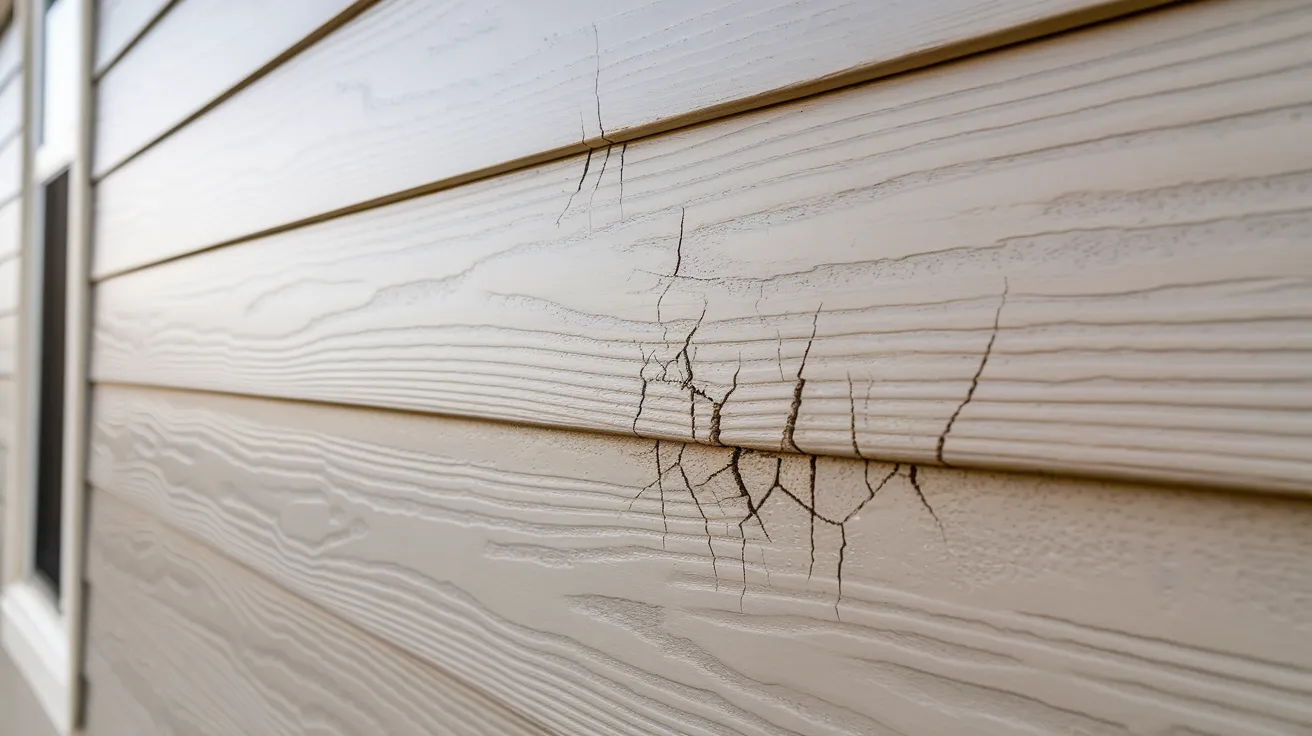
Cracks in fiber cement siding are usually the first sign of trouble. At first, they may appear as thin lines near windows or corners.
Over time, small cracks grow larger and start to split the board. Water can get inside these cracks. In cold weather, it freezes and exacerbates the condition.
Sometimes cracks happen from poor installation. At other times, it’s the house settling or being bumped.
No matter the reason, you shouldn’t ignore them. Fixing them quickly helps stop bigger problems.
2. Warping
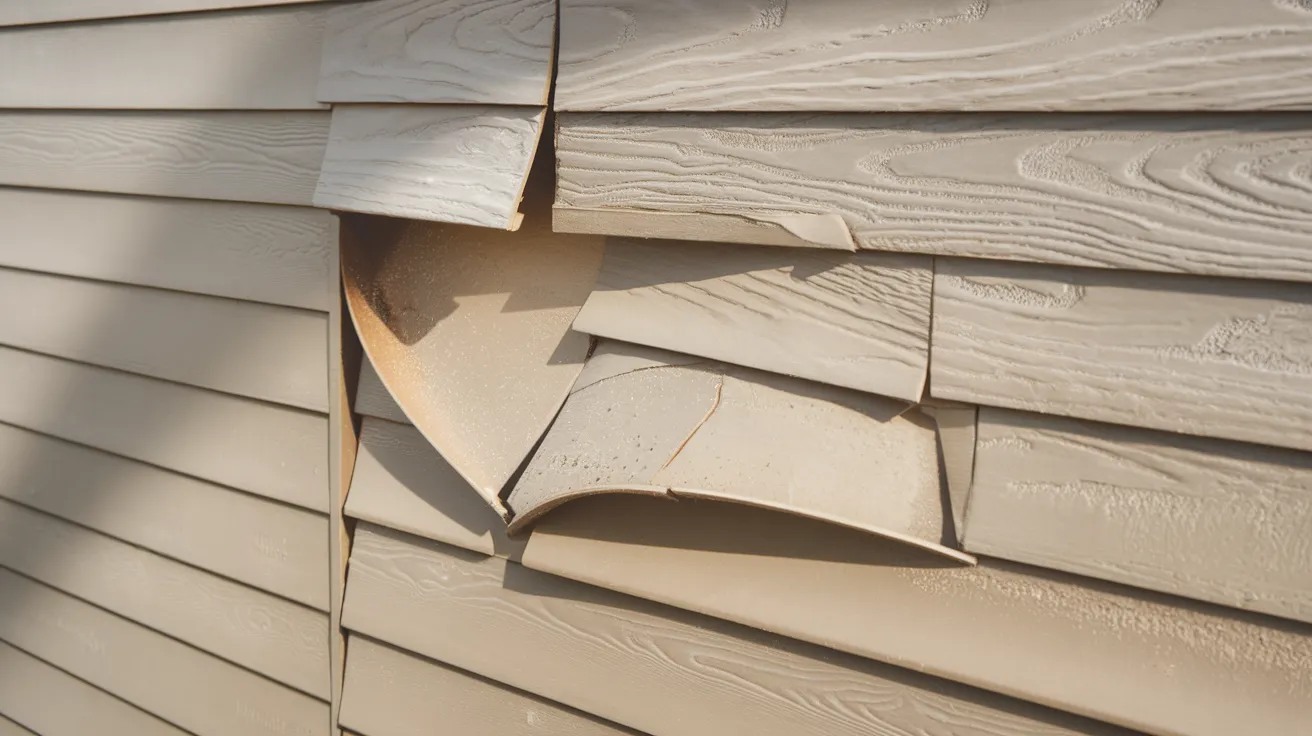
Warping occurs when siding begins to bend or protrude from the wall. At first, only one edge might curl.
However, the board may soon bow out completely. This makes your siding look uneven and loose.
Moisture getting behind the board is often the cause. If the siding wasn’t nailed correctly or sealed properly, it warps more quickly.
Once warping begins, replacing the damaged pieces is typically the most effective solution.
3. Peeling or Fading Paint
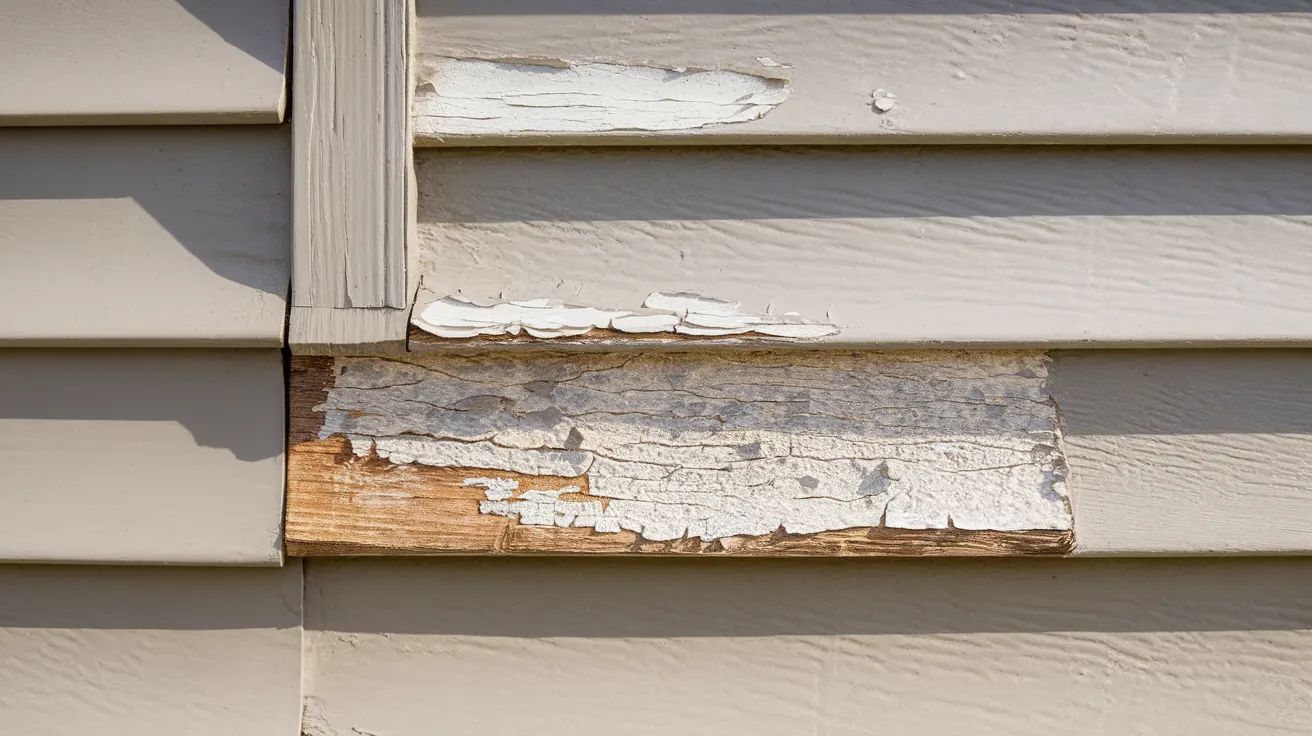
When the paint on your siding starts to peel, you’ll notice chips near corners or edges.
These flakes come off and expose the siding underneath. The sun can fade the paint, too, especially on walls that face south.
Fading occurs slowly, but it can make your siding appear old. Worse still, peeling paint allows water to seep in.
This can lead to mold or rot. Repainting every 10 to 15 years helps prevent this.
4. Mold, Mildew, and Water Stains
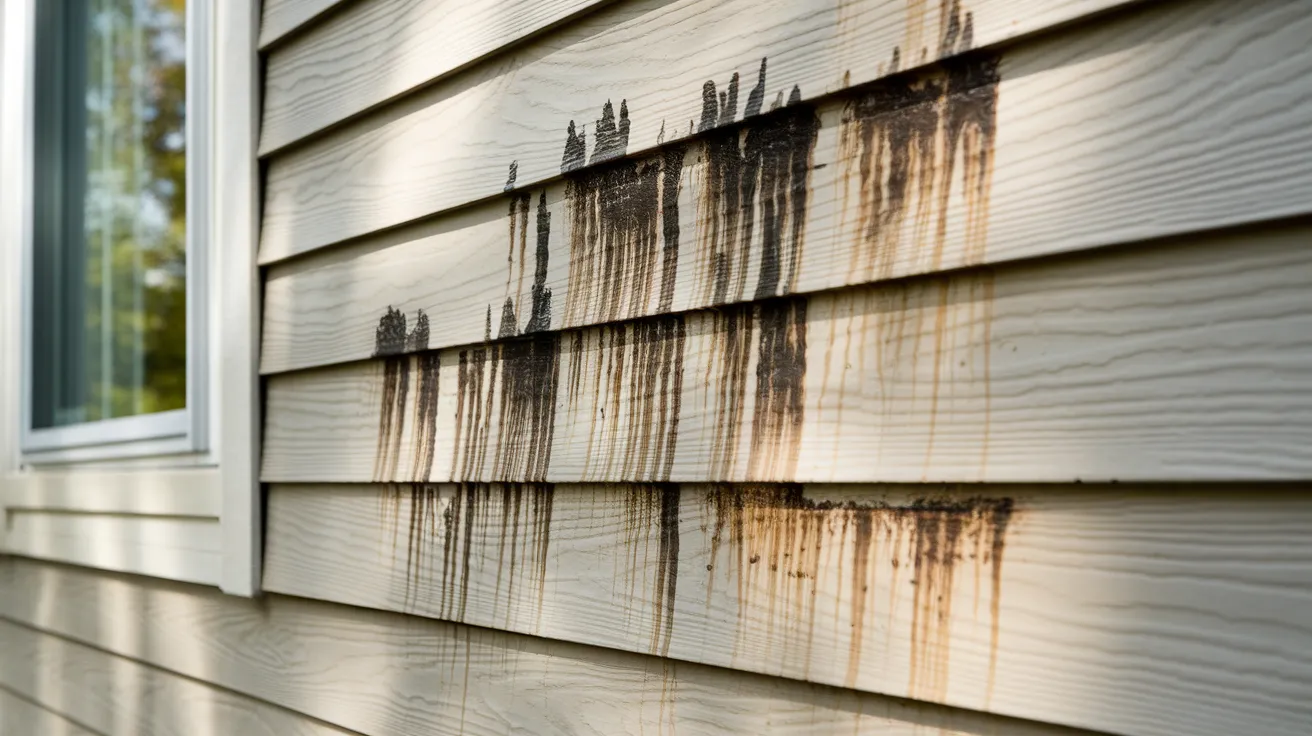
Dark streaks or spots on siding usually mean that moisture is trapped.
Mold and mildew thrive in damp environments, particularly on the shady sides of the house. Water stains show up where rain drips off roofs or windows.
These stains often look brown or black. If you only clean the stains, they’ll come back.
You have to stop the water from getting there. Fix the leak or gutter first before scrubbing the siding.
5. Loose or Missing Panels
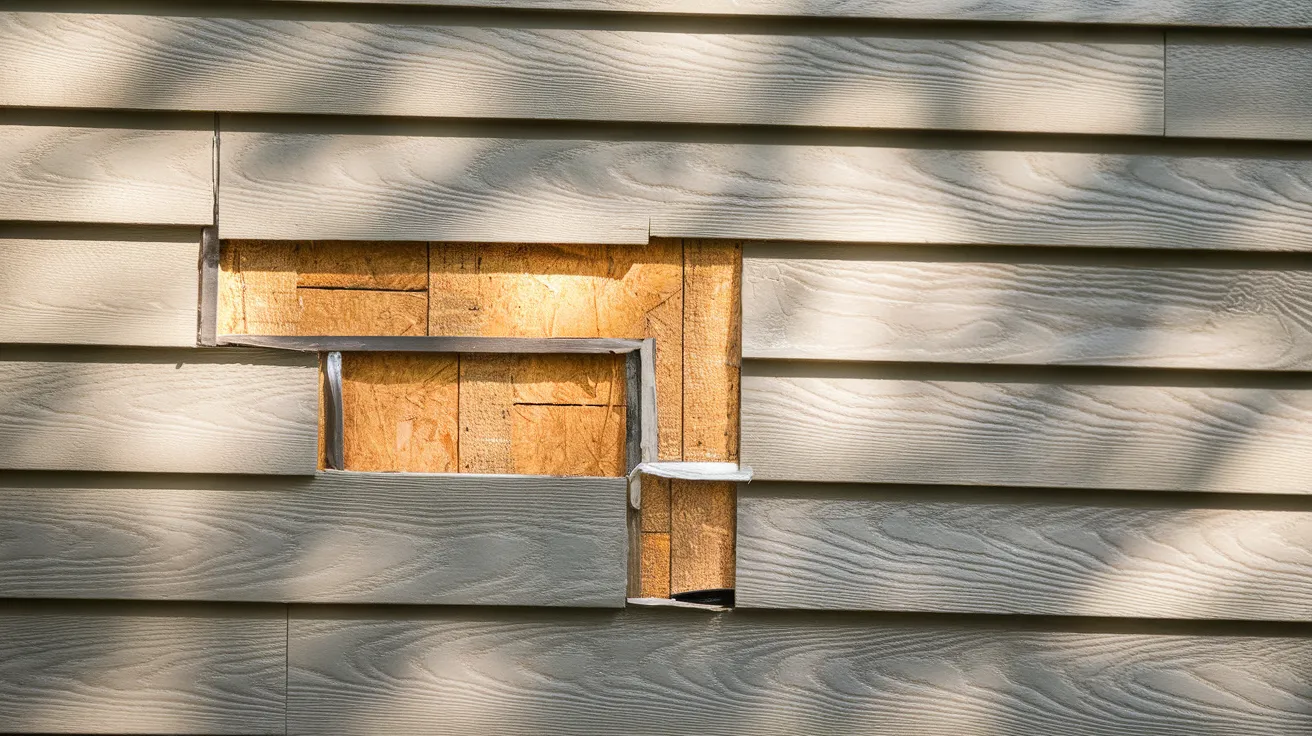
When a board is loose, you might hear it rattle on windy days.
You can also feel it move when you press on it. This usually means the nails or screws came out. Storms or bad installation often cause it.
If a board goes missing, that’s even worse. Now your wall is open to rain and wind.
Always check your siding after strong weather. Catching a loose board early can save a more significant repair later.
6. Spongy Areas

If a part of your siding feels soft or spongy, it’s a serious warning.
The board should feel firm when you press it. Spongy areas usually mean water has gotten behind the siding.
This happens often near the bottom of the house. Rain splashes up from the ground and slowly soaks in.
Poor drainage or clogged gutters can exacerbate the issue. These soft spots need to be replaced right away.
7. Discoloration or Streaking
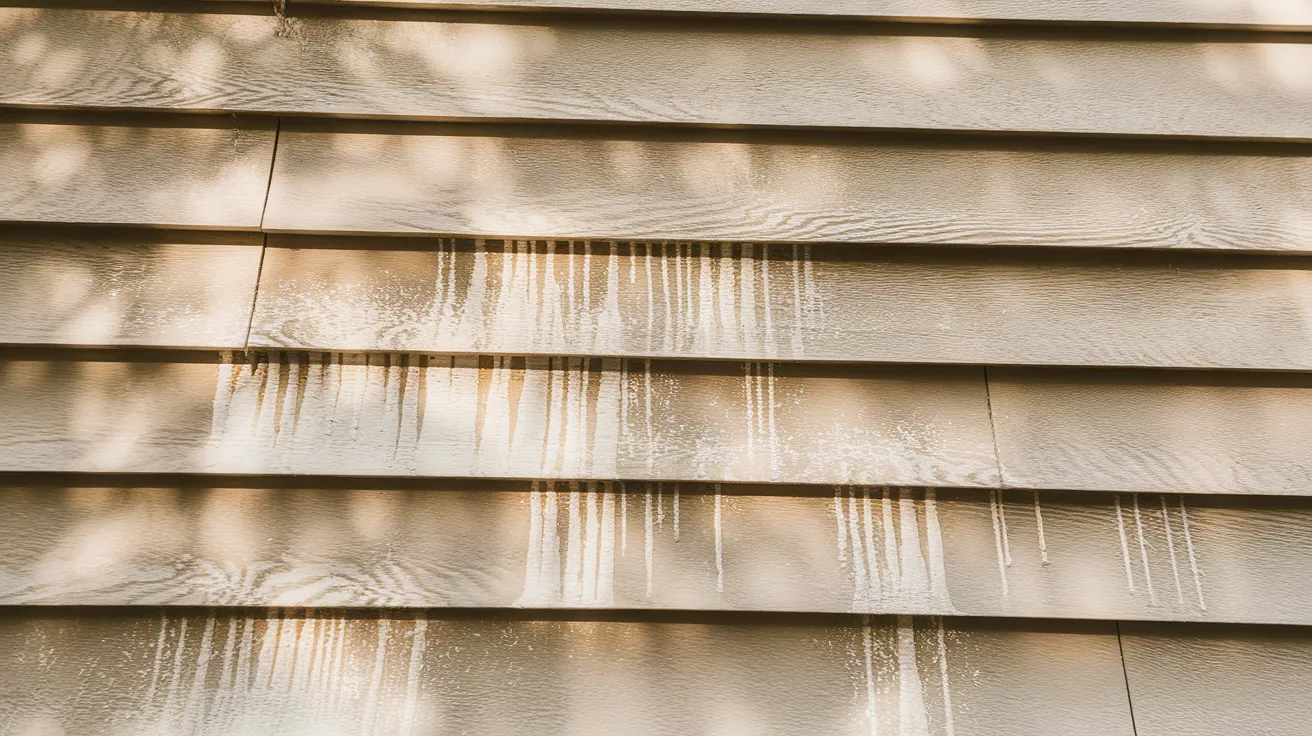
When your siding changes color or develops streaks, it might just be dirty, or it could indicate a more serious issue.
Light-colored lines are typically the result of salt or mineral buildup that occurs after rain has dried. That’s not harmful, but it still looks messy.
Dark streaks may be caused by dirt, mold, or even water damage. If cleaning doesn’t help, look for leaks. Keeping your siding clean and dry is the best way to avoid these stains.
However, if they continue to come back, something deeper is amiss.
Potential Causes of Fiber Cement Siding Problems
The following are the most common causes of trouble with fiber cement siding:
- Improper Installation Techniques: Many problems start with bad installation. Skipping steps like pre-drilling or not leaving gaps can cause cracks and buckling to form quickly.
- Moisture Infiltration: Water sneaks in through gaps or bad caulk. It causes damage behind the siding, especially if flashing is missing or boards touch the ground.
- Extreme Weather Exposure: Hail cracks the surface. Wind loosens boards. Large temperature swings can stress the siding and cause it to warp.
- Poor-quality paint or Missing Primer: Cheap paint tends to peel early. Without primer, paint won’t stick well. This leaves the siding open to moisture and damage.
- Lack of Maintenance: Failing to clean or repaint allows water to enter. Old caulk cracks over time. These small tasks help avoid bigger repairs.
- Bad Flashing or Caulking: Water gets in through failed flashing or caulk around windows. This can cause the framing behind the siding to rot.
- Structural Movement or Settling: When houses shift or settle, the siding can crack and become damaged. Leaving space during install helps absorb some movement.
How to Prevent Fiber Cement Siding Issues?
Stopping siding problems before they start is always cheaper and easier than fixing them later. The following are the ways you can prevent problems with fiber cement siding:
- Hire a Qualified Installer: Select someone knowledgeable about fiber cement. Ask for references. Paying more now saves money later.
- Use the Right Materials: Follow the manufacturer’s instructions. Don’t let shortcuts happen. Use correct fasteners, flashing, and tools.
- Keep Siding Off the Ground: Leave a 6-inch gap between the siding and the soil. Trim plants away to stop water damage.
- Clean Once a Year: Wash with soft brushes and mild soap. Avoid pressure washers unless you’re careful.
- Check and Replace Caulking: Look every few years. Replace if it’s cracked or missing. It stops water from getting behind the boards.
- Touch Up Paint Fast: Repair chips quickly. Use saved paint for small touch-ups.
- Inspect Flashing Often: During roof inspections, also inspect the flashing. It should send water away from the siding.
When to Repair vs Replace Fiber Cement Siding?
Are you unsure if you want to repair or replace your fiber cement siding? You’re not alone.
This decision depends on the extent of the damage, the age of the siding, and what is happening underneath. Small damage often means simple fixes.
However, bigger problems may indicate the need for a full replacement.
| Situation | Repair | Replace |
|---|---|---|
| Cracks or chips in one area | ✅ Replace a few boards | ❌ Full Replacement not needed |
| Warped or loose sections | ✅ Fix boards if limited to small spots | ❌ Replace if widespread |
| Paint peeling or fading | ✅ Repaint or touch up | ❌ Full job unnecessary |
| Water damage behind siding | ❌ Repair alone won’t help | ✅ Replace and fix the structure |
| Siding is over 20 years old | ❌ Repairs may not last long | ✅ Replacement often makes more sense |
| Poor original installation | ❌ Fixing pieces won’t solve everything | ✅ Replacing the entire setup is better |
Always weigh your options carefully. If your siding is still under warranty, check to see what is covered.
Sometimes, what appears to be a significant problem may only require a minor adjustment. However, if the issues persist, a full replacement can ultimately save you money in the long run.
Conclusion
Is fiber cement siding still worth it? Yes, it definitely is. Although problems can occur, this siding remains one of the best choices available.
The most important factors are proper installation and regular maintenance. Most issues I see come from rushed jobs or skipped steps. Don’t let that happen to your home.
When you spot damage, act fast. A small problem becomes a big one if you wait too long. Inspections help catch trouble early.
Yes, fiber cement does cost more initially. But it saves money later because it lasts longer. Every siding has pros and cons. With care, this one works really well.
Have you experienced any issues with fiber-cement siding? Let others know in the comments below.
If you found this blog helpful, you can also read about how you can replace siding by yourself. It is useful, easy, and gives you clear instructions that you can follow.

